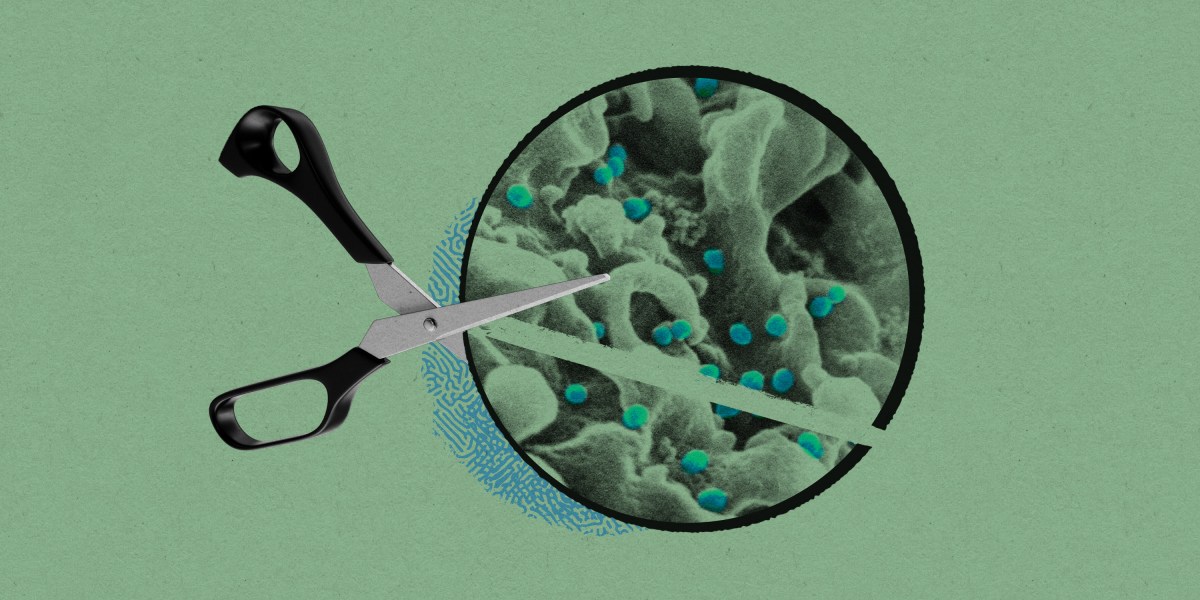The Download: gene-editing HIV, and how to destroy PFAS

The news: The gene-editing technology CRISPR has been used to change the genes of human babies, to modify animals, and to treat people with sickle-cell disease. Now scientists are attempting a new trick: using CRISPR to permanently cure people of HIV.
How they did it: A biotechnology company called Excision BioTherapeutics says it added the gene-editing tool to the bodies of three people living with HIV and commanded it to cut, and destroy, the virus wherever it is hiding.
What it means: The early-stage study is a probing step toward the company’s eventual goal of curing HIV infection with a single intravenous dose of a gene-editing drug. However, because the doctors withheld early data about the treatment’s effects, outside experts have been left guessing whether it worked. Read the full story.
—Antonio Regalado
The race to destroy PFAS, the forever chemicals
What do firefighting foams, hiking boots, raincoats, nonstick frying pans, lipstick, and even ink have in common? They can all contain PFAS, a family of chemical compounds that have been used in countless applications for decades.
The compounds are ubiquitous in drinking water and soil, even migrating to Arctic sea ice. PFAS are called forever chemicals because once present in the environment, they do not degrade or break down. They accumulate, and ultimately persist.


